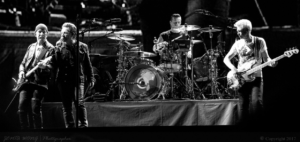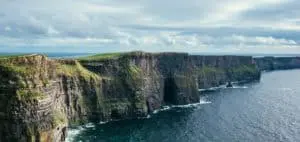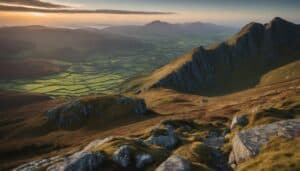Irish Sea Myths and Legends: Exploring Maritime Folklore
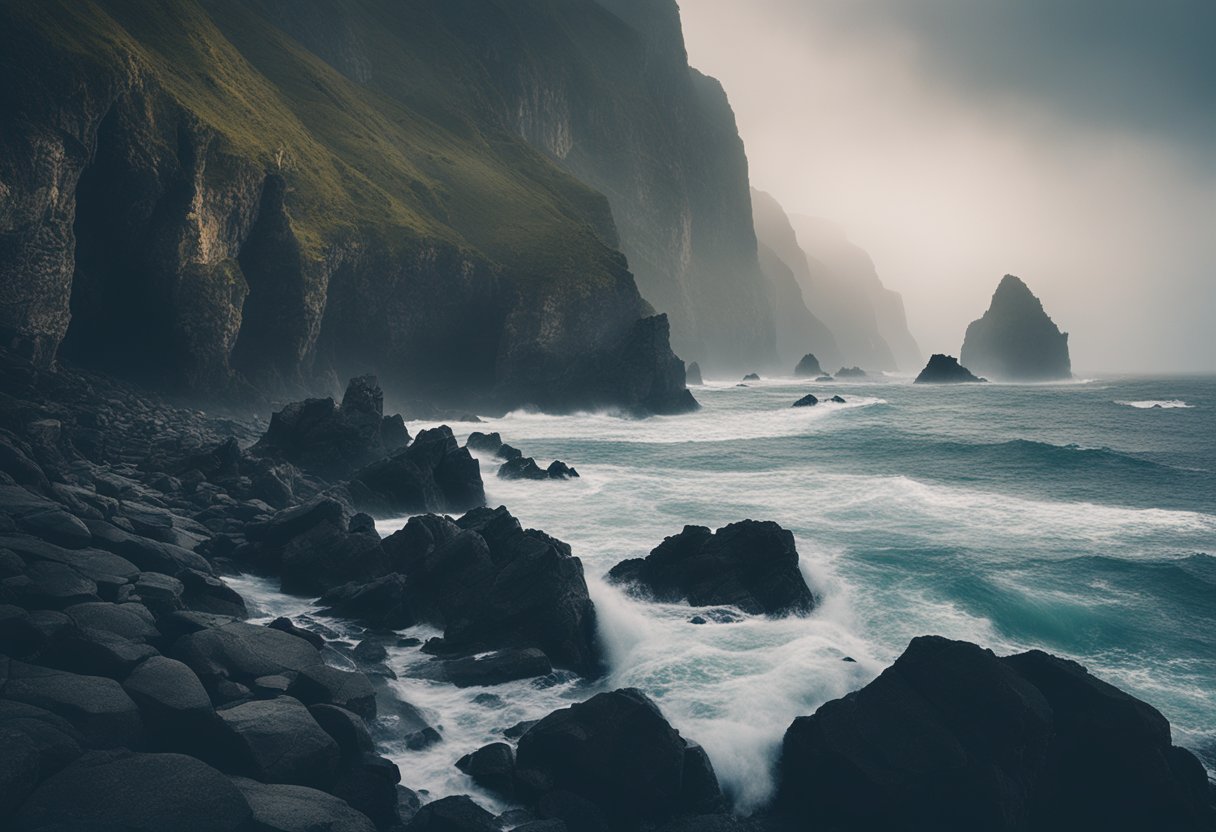
Updated On: April 22, 2024 by Noha Basiouny
Irish sea myths and legends hold a special place in the tapestry of folklore that shrouds the Emerald Isle. From mighty sea gods to eerie creatures that lurk beneath the waves, these tales have been passed down through generations, capturing the imagination of all who hear them. They spring from a culture rich in storytelling—a fundamental aspect of our heritage that continues to enchant and educate. The ocean’s mysterious depths and its unfathomable nature provide the perfect backdrop for stories of adventure, terror, and wonder, allowing these ancient narratives to thrive even in the modern day.
Within these myths, we find not only entertainment but also insights into the values and beliefs of our ancestors. The tales often reflect the awe with which the Irish people viewed the sea, both as a source of life and a realm of the unknown. The mythology is home to a host of iconic characters and supernatural events that embody the intertwining of the natural and spiritual worlds. From the celebrated exploits of heroes and the machinations of gods to the hidden kingdoms under the sea, these stories form a cornerstone of our cultural identity.
Table of Contents
Origins of Irish Sea Myths and Legends
In the tapestry of Irish mythology, sea myths hold a profound place, intricately woven with threads of ancient wisdom and cultural exchanges. These stories, deeply rooted in the heritage of the Emerald Isle, draw from an extensive mythical past that includes Celtic influences and exchanges with other civilisations.
Celtic and Irish Mythology Roots
Our sea myths emerge from the deep well of Celtic mythology and are an integral part of what defines Irish mythology. The Celts had a rich pantheon of gods and goddesses, many of whom pertained to the sea and water. Prominent among these is the deity Manannán mac Lir, often considered the equivalent to the Roman god Neptune or the Greek god Poseidon. He is the fabled God of the Sea and Guardian of the Afterlife, commanding a mystique that weaves through our sea lore, with elements suggesting an overlap with Hades, the Greek god of the underworld.
Influence of Ancient Civilisations
Irish sea myths also reflect the interplay with other ancient civilizations. The Celts and Irish were known to have had interactions with both the Roman and Greek worlds. Such exchanges influenced our mythologies, allowing the import of stories and symbols, which were then adapted to fit our own cultural narratives. This cross-cultural fertilisation enriched the Celtic and Irish mythologies, leaving us with a legacy where original tales and external influences are often indistinguishable from each other.
Irish sea mythology, therefore, is not just a product of insular invention but a testament to the dynamism of cultural exchange that was happening across ancient Europe. These myths have survived through time, preserved in manuscripts and perpetuated in the oral tradition, to remind us of the sea’s omnipresence in the lives of our ancestors.
Legendary Creatures and Beings
In the tapestry of Irish myth and legend, the sea is home to an array of enchanting creatures and formidable beings, each with their own unique stories and attributes that have been passed down through generations.
Fomorians and Tuatha Dé Danann
The Fomorians, ancient sea deities symbolising chaos and wild nature, were said to be adversarial to the Tuatha Dé Danann, a fabled race of god-like beings known for their skill in arts and crafts. These two mythic forces represent the dual aspects of nature’s power—its beauty and its ferocity. The Tuatha Dé Danann, in particular, are famed for their enchanted objects, like the Lia Fáil, which roared when the true king of Ireland stood upon it.
Fairies, Merrows, and Selkies
The seas and coastlines of Ireland are also rife with stories of magical entities. Fairies (Aos Sí) are a ubiquitous presence in Irish folklore, inhabiting a realm brimming with mystery. The Merrow, or Irish mermaid, is a benign sea spirit often described as a beautiful woman from the waist up but fish-like below. Selkies, on the other hand, are shape-shifting seal people who can remove their skins to become human on land.
Giants and Mythological Monsters
Irish legends teem with giants whose legacies are etched into the landscape, such as the mighty Fionn mac Cumhaill, attributed with creating the Giant’s Causeway. Mythological monsters like the Cailleach, a divine hag associated with winter and harshness, also occupy a prominent place in these storied chronicles. These beings encapsulate the awe and dread that the powerful, unpredictable forces of nature can inspire.
Epic Tales and Mythological Cycles
Irish mythology is rich with epic tales and cycles, where heroes and gods embody ancient Ireland’s values, conflicts, and stories. These cycles are not mere fables but woven into the identity and culture of the Irish past.
The Ulster Cycle
Key Entities: Táin Bó Cúailnge, Cú Chulainn
The Ulster Cycle narrates the heroic deeds of the Ulaid, especially centred around the character of Cú Chulainn, the legendary Irish hero. His life story and the Events that make up Táin Bó Cúailnge (Cattle Raid of Cooley) are central, depicting a defining war spurred by the theft of a prized bull. This cycle combines themes of honour, kingship, and the tragic destiny of a hero entwined with supernatural elements.
The Fenian Cycle
Key Entity: Fenian Cycle
In the Fenian Cycle, we explore the tales of Fionn mac Cumhaill and his warrior band, the Fianna. This cycle is recognised for its combination of folklore, poetry, and narrative, establishing foundational material for many Irish stories, including the famous Oisín in Tír na nÓg within the lore. The stories are infused with the complexity of heroism and the nuances of human and Otherworldly relationships.
The Mythological Cycle
Key Entities: Lebor Gabála Érenn, Cath Maige Tuired, Children of Lir
The Mythological Cycle details earlier gods and the supernatural ancestries of the Irish, focusing on narratives such as the Lebor Gabála Érenn (Book of Invasions) and the struggle of divine beings in Cath Maige Tuired (Battle of Moytura). We also encounter the poignant tale of the Aided Chlainne Lir (Children of Lir), a story of transformation and endurance amid sorrow. These mythological narratives provide insight into the cosmology and ancient religious beliefs of Ireland.
Iconic Myths and Characters
We delve into the heart of Irish mythology, exploring the sea-soaked tales and illustrious characters that have shaped our cultural heritage.
The Tragic Story of the Children of Lir
In Irish lore, the sorrowful tale of the Children of Lir echoes the themes of transformation and endurance. The story tells of Lir, a sea deity, and his four children who were turned into swans by their jealous stepmother, Aoife. They spent centuries adrift on various bodies of water, bound by enchantment, until the spell was broken, and they returned to human form, aged and weary.
Cú Chulainn, the Warrior
Cú Chulainn stands as one of Ireland’s most revered mythological heroes. An unsurpassed warrior from the Ulster Cycle, he is celebrated for his superhuman prowess and the tale of his single-handed defense against invading armies. Famous for his battle frenzy, known as ríastrad or warp spasm, Cú Chulainn’s legend intertwines him with kings, gods, and the land itself.
Fionn mac Cumhaill and the Fianna
Fionn mac Cumhaill, a mighty hunter and warrior, is synonymous with the band of warriors known as the Fianna. With tales of valor and wisdom, Fionn and the Fianna are central to Irish folklore. Their adventures are countless, including Fionn’s acquisition of wisdom from the Salmon of Knowledge and the many exploits and battles fought alongside—or sometimes against—the supernatural forces of Ireland.
Otherworldly Realms and the Afterlife
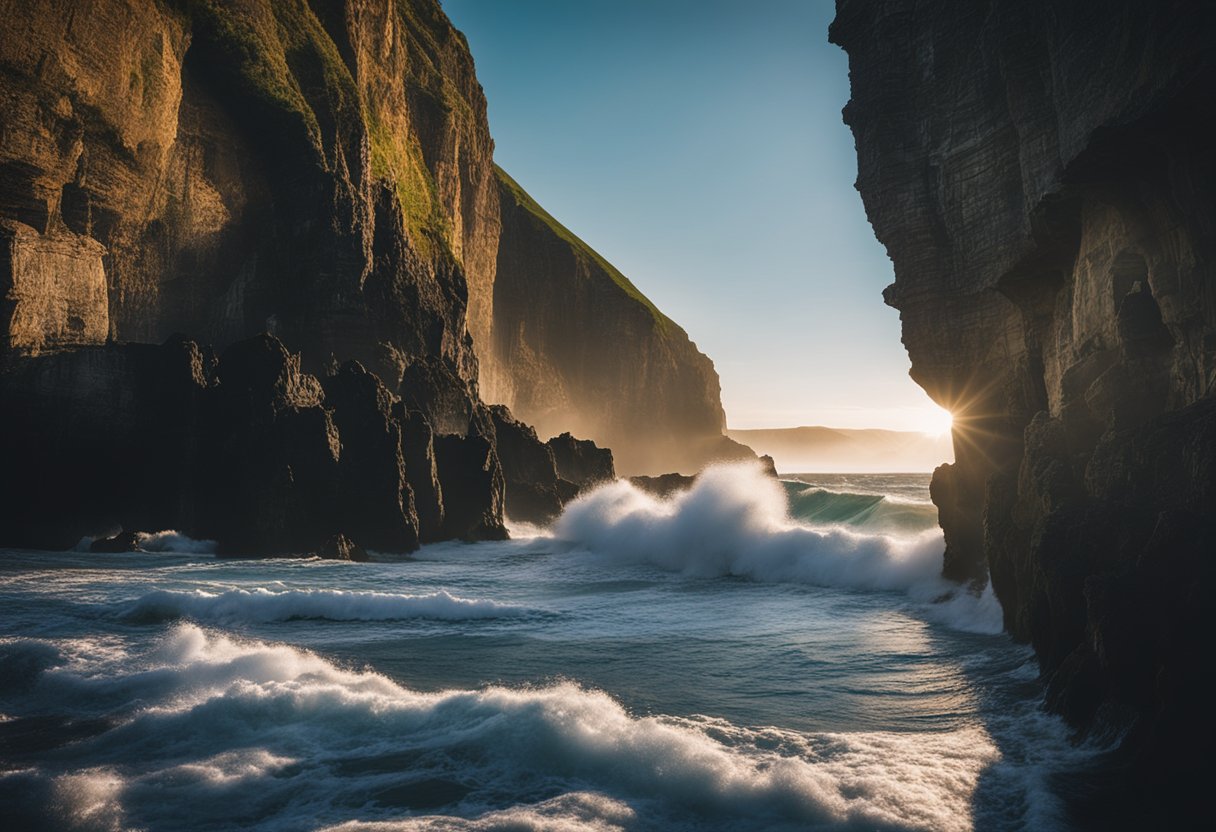
In the rich tapestry of Irish mythology, the concepts of otherworldly realms and the afterlife form the bedrock of many legends and beliefs. These tales offer a glimpse into a world beyond our own, a place of eternal youth and profound mysteries.
Tír na nÓg and Eternal Youth
Tír na nÓg stands as the most luminous jewel in the crown of Irish mythological realms, synonymous with the promise of unending youth and joy. We understand it as an otherworldly paradise, inaccessible to mere mortals, except through extraordinary circumstances. Stories tell of heroes embarking on perilous journeys, often through mystical portals like ancient burial sites or deep subterranean caves, to reach this land. Here, time stands still, and the inhabitants are free from the sorrow of aging and death.
The sídhe, or fairy folk, are considered to be the denizens of Tír na nÓg and play a crucial role in the mythos surrounding these ethereal lands. As guardians of these supernatural thresholds, they intertwine with the lives of humans, sometimes offering paths to this enchanting realm.
The Otherworld in Celtic Belief
The Otherworld is a pervasive element in Celtic belief systems, existing alongside the mortal world yet apart in its nature and governance. This realm is commonly referred to as Annwn in Welsh mythology, and, as detailed on Wikipedia, it has parallels in Arthurian legend as Avalon.
One poignant figure associated with the Otherworld is Manannán, a god of the sea. Our understanding places him as the protector of these Otherworldly domains, navigating the waters between the worlds with his legendary chariot. Like Tír na nÓg, the Otherworld, as described on Ancient Origins, is a place where mortal souls may venture but only under rare circumstances, often guided or hindered by entities like Manannán who command the ebb and flow between life and the afterlife.
Through these myths, we perceive a complex fabric of interwoven realms and beings, providing us not only a window into the world beyond but also insight into ancient Irish cosmology and spirituality.
Symbols of Power and Enchantment
Within Irish sea myths and tales, there are numerous symbols that channel potent forces and deep wisdom. We’ll explore both the well-known and the less obvious, revealing the layers of meaning behind these enchanting symbols.
Magical Objects and Omens
The Salmon of Knowledge is perhaps one of the most profound symbols within Irish mythology, embodying wisdom and deep understanding. It is said that whoever consumes this illustrious creature gains all the world’s knowledge. Crusted in shimmering scales, the salmon offers a direct link to the primal power of water and the secrets it holds.
Omens play a pivotal role in foreshadowing events within these tales. A sudden gust of wind or an unexplained sound could signal a significant shift or a warning of what’s to come, indicating the interconnectedness of the natural world and the fate of those who reside within it.
The harp, often seen in our tales of enchantment, is not merely a musical instrument but also a bridge to the otherworld. Stroked by skilled hands, its melody can soothe the fiercest storm, call forth beings from realms unseen, or even awaken those who are under a magical slumber.
Sacred Animals in Myths
In our rich tapestry of sea lore, creatures of the deep hold positions of honour and reverence. Among them, the Merrow, the sea maidens of our folklore, were believed to be protectors of the ocean’s treasures and wielders of enchantment over the hearts of men.
Meanwhile, the mundane fisherman’s net could be seen brimming with a salmon bearing ancient wisdom, reminding us that the sacred can often be found within the grasp of the common.
In these stories, animals often serve as guides or guardians, possessing attributes that were venerated by the ancient Celts. From the shape-shifting seals to the celestial swans, each creature carries its own symbolism and plays a crucial role in the unfolding of these mystical narratives.
Every object and being in our sea myths is infused with a deeper meaning, each a symbol of the rich cultural tapestry that has been woven around the Emerald Isle’s shores.
Cultural Impact and Revival

Irish sea myths and legends not only offer a glimpse into the mystical past, but they continue to shape and influence the cultural identity and artistic expressions of modern Ireland.
Irish Folklore in Modern Times
Storytelling: In current Irish society, the ancient art of storytelling persists, with tales of the sea and its creatures being shared in literary works, theatre, and popular media. Our oceanic folklore, rich with legends of the Merrow and other sea beings, is frequently depicted in literature and art, inviting a sense of mystery and continuity with the past. The stories that once were spoken beside hearths have found their way into mainstream culture, symbolising the resilient nature of our traditions.
Education: Educational initiatives, like those advanced by the Marine Institute’s Explorers Education Programme, engage children with our marine heritage, ensuring that these stories continue to be a living part of Ireland’s identity. This inculcation of folklore in the young paves the way for an abiding appreciation of our cultural roots.
Revival of Celtic Traditions
Cultural Movements: There’s been a conscious effort to revive Celtic traditions, with an emphasis on the appreciation of our Celtic mythology. Organisations and groups dedicated to the preservation of our cultural heritage often host events celebrating the storied history and mythology of the Irish seas, bridging the gap between ancient and contemporary expressions of our identity.
Art and Festivals: Our festivals and art imitate the vibrant tapestry of Celtic mythology, bringing to life the spirits of the past through modern creativity. The resurgence of interest in traditional myths has inspired a wealth of literature and artwork, interpreting these tales for a new generation. As a result, the essence of these tales is preserved and woven into the fabric of contemporary Irish life.
Supernatural Events and Warnings

In Irish mythology, the sea is not just a vast expanse of water, but a realm filled with omens and entities that foretell doom or misfortune. We explore some of the most profound supernatural events and warnings that have haunted Irish shores and the legends that continue to echo through time.
Banshees and Foretelling Doom
The banshee is a spectral figure whose mournful wail is an omen of death in Irish families. Steeped in centuries of folklore, the banshee’s cry serves as a supernatural warning that a member of the household will soon pass away. This eerie harbinger of doom is often depicted as an old woman in rags, with long, flowing hair and a penchant for wailing by the water’s edge at night. The banshee’s presence underscores the inevitability of death and the thin veil between the mortal world and the afterlife.
Vampires and Dark Legends of Ireland
The dark corners of Irish folklore host tales of creatures like Abhartach and Dearg Due, entities that resonate with the classic vampire myth but are uniquely Irish in their origins. Abhartach is said to have been an evil chieftain who rose from his grave to suck the blood of the living, spreading misfortune and death. Meanwhile, the Dearg Due is a figure of seduction and malevolence, a nocturnal predator linked to stories of entrapment and the preying upon innocent souls. These legends often serve as cautionary tales about the dangers lurking in the shadows and the bad fortune that can ensnare the unwary.
Legendary Locations and Landscapes
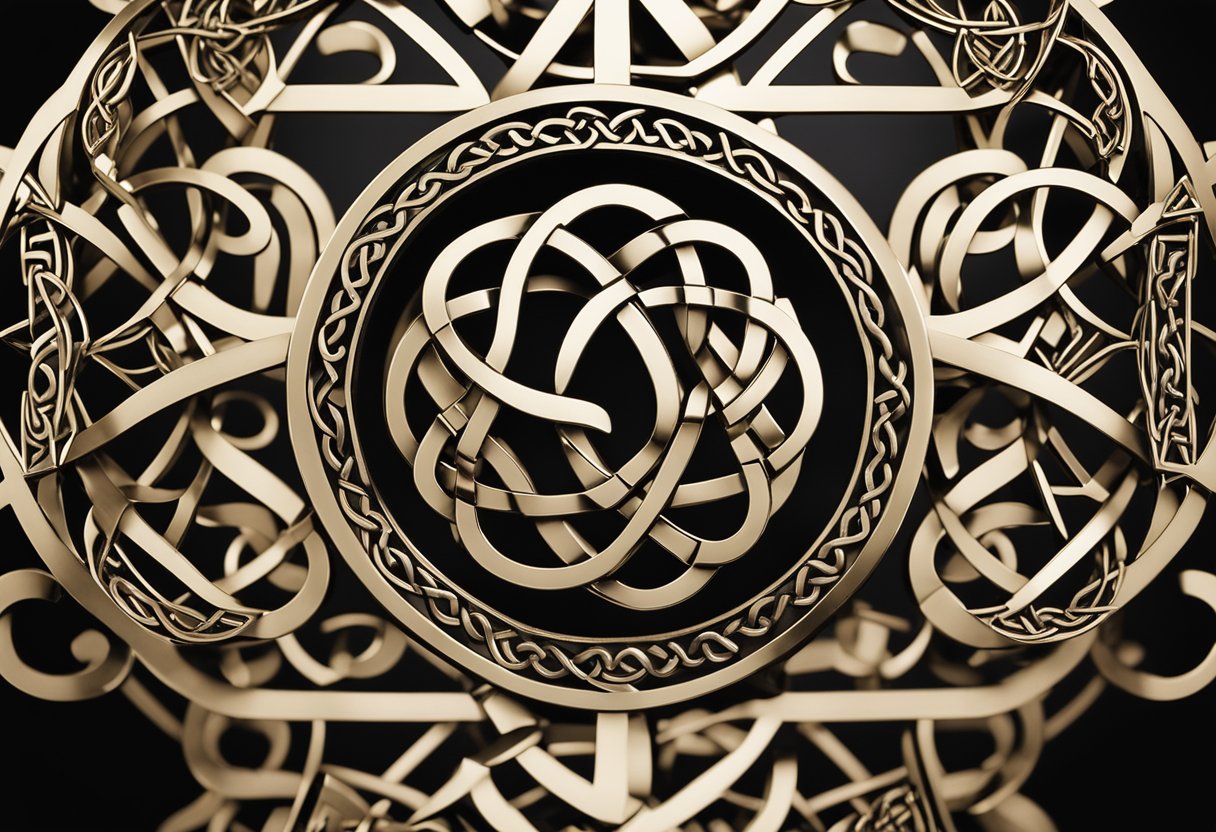
Ireland, with its rugged coastline and mystical landscapes, has long been a land steeped in legend and myth. From the sea to the rolling hills, the Emerald Isle is a treasure trove of mythical locations, each telling a story from a time when the lines between the physical world and the realm of the supernatural were blurred.
Mythical Islands and Hidden Lands
Hy-Brasil: Often shrouded in mist, this phantom island is said to appear only once every seven years. The allure of Hy-Brasil lies in its tales of an enchanted land, rich with advanced civilization and wealth. Despite many explorers’ attempts to locate it, the island remains one of Ireland’s most enduring sea legends, hidden in the folds of the Atlantic Ocean.
The Otherworld: In Celtic mythology, this realm is a place of eternal youth and beauty, existing alongside our own yet separate. Tír na nÓg is perhaps the most famous of these otherworldly domains, believed to lie to the west of Ireland, accessible by water and guarded by magical beings who can sometimes make contact with the mortal world.
Sacred Sites and Their Legends
The Giant’s Causeway: A UNESCO World Heritage Site in Northern Ireland, this coastal formation of basalt columns is the subject of a famed legend involving the giant Finn McCool. As the tale goes, Finn created the causeway as stepping-stones to Scotland to face a rival giant, thus linking the land and sea with the footprint of giants.
Hill of Uisneach: In the heart of Ireland lies Uisneach, a sacred site said to be the mystical centre of Ireland. Legends recount it as the place where the goddess Ériu, after whom Ireland is named, is buried. Once a year, water and fire come together in a ceremonial festival that celebrates the historic and mythic significance of this ancient druidic site.
Our shared cultural heritage, as reflected in places such as these, stitches together land and sea, Ireland and its neighbours—Scotland and Wales—with the rich tapestry of Celtic mythology. Remnants of the past, such as leprechauns and the revered goddess Macha, continue to cast their spell over these landscapes, beckoning those who wish to explore the depths of Ireland’s mythic past.
Influences on Personal and Social Identity
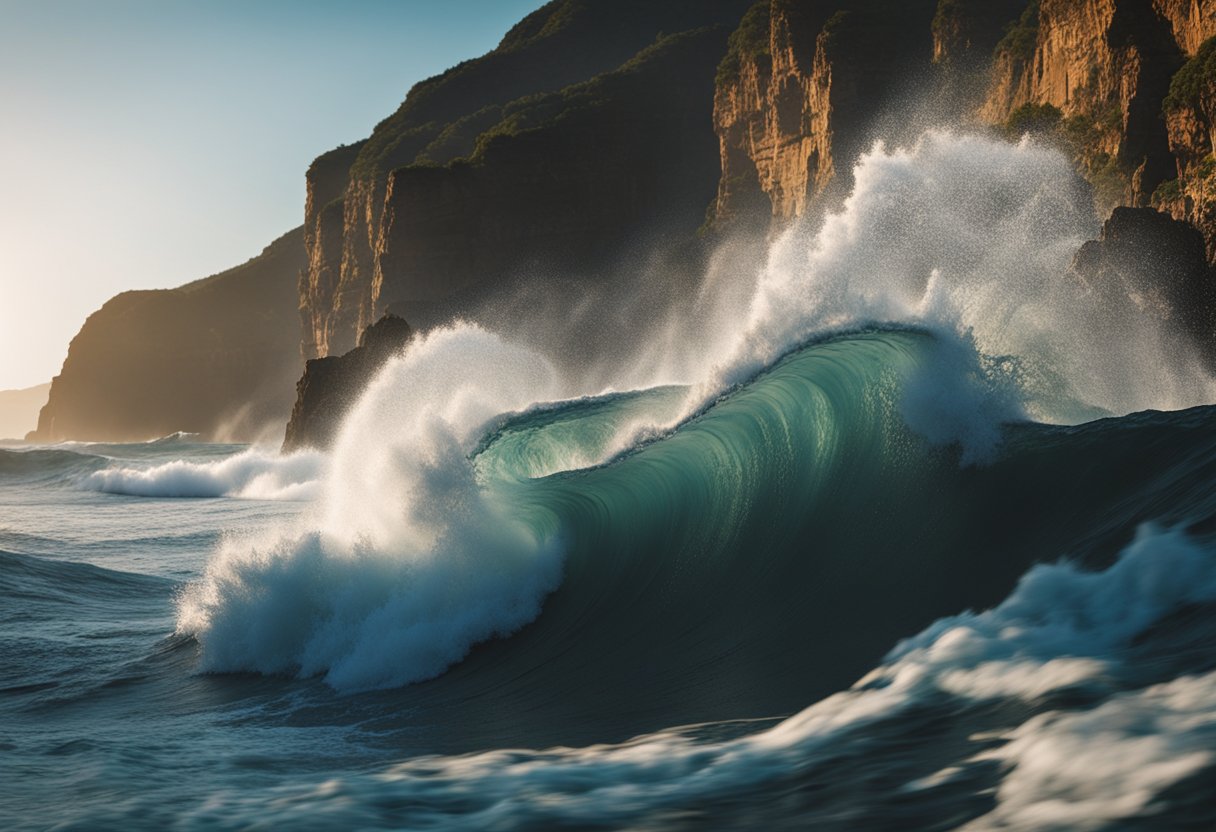
Myths and legends are not just stories of old; they infuse our personal and social identities, particularly within Irish culture, where they play a fundamental role in shaping who we are as individuals and as a collective.
Legends Shaping National Identity
Legends, steeped in the folklore of rural Ireland, tell tales of heroism and bravery that transcend time. Our national identity is deeply infused with these stories; the legend of Cú Chulainn, for example, mirrors the traits we, as Irish, aim to embody: strength and honour. These narratives from our origins are woven into the fabric of our society, influencing everything from the arts to how we perceive our collective past. Embracing these tales allows us to keep a connection with our ancestors, fostering a sense of pride and belonging that spans generations.
Myths Influencing Family and Relationships
Irish mythology, rich with stories of love, family, and relationships, often serves as allegories that illuminate the complexities of the human condition. Tales of star-crossed lovers such as Diarmuid and Gráinne offer insights into the values that are revered in familial and romantic relationships. These stories stress the importance of loyalty, commitment, and the trials often faced in relationships. Within a familial context, such myths ingrain in us a sense of duty and devotion, characteristics that are considered paramount in sustaining the close-knit family units typical of Irish culture.
Celtic Deities and Divine Figures
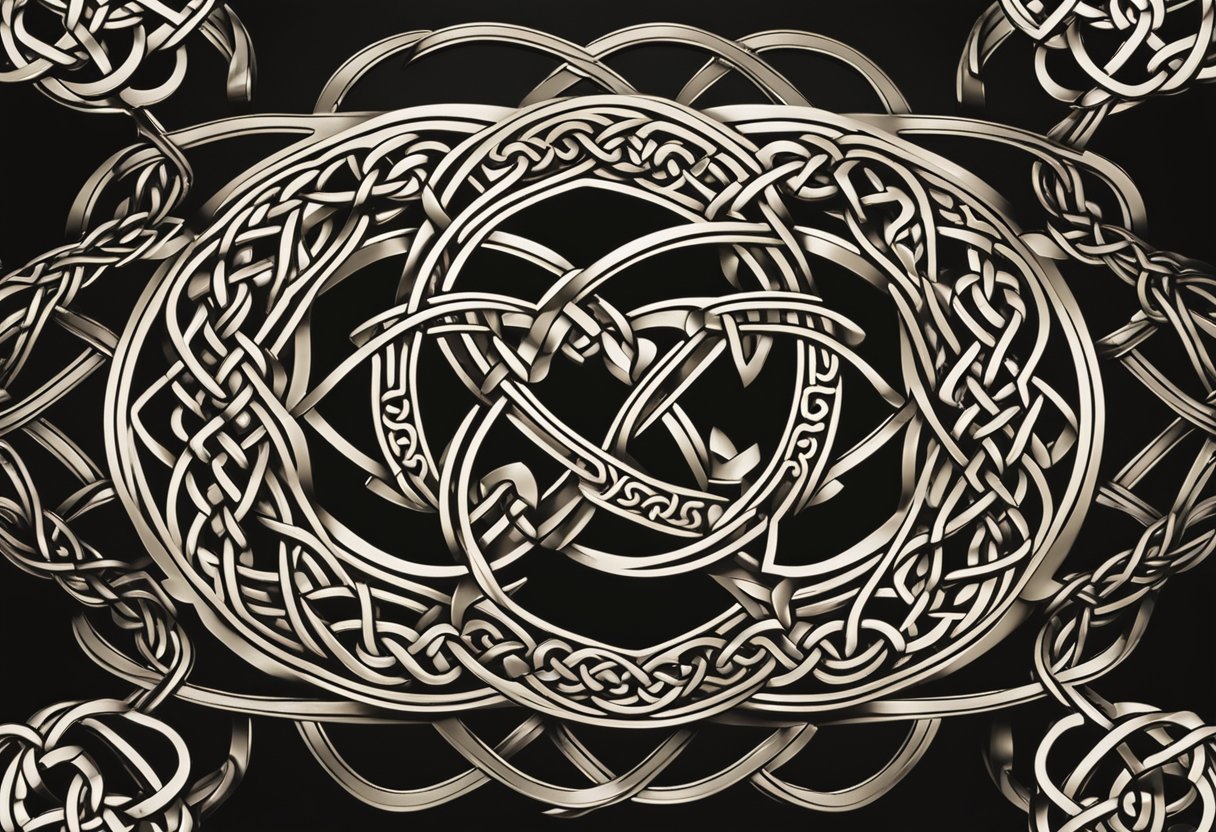
In the rich tapestry of Irish mythology, gods, goddesses and saints are interwoven, each with their own legends and significance to the Celtic people.
The Pantheon of Irish Gods and Goddesses
- The Morrígan: Known as the goddess of war, the Morrígan is often depicted as a figure of prophesy and fate, wielding influence over the battlefield. Recognised as a singular entity or a trio of sisters, she embodies the complexities of war, death, and sovereignty.
- Anu: Often regarded as a mother goddess, Anu is associated with fertility, prosperity, and the earth itself, representing the nurturing aspect of the Irish deities.
- Balor of the Evil Eye: This formidable figure in Celtic mythology is a king among the Fomorians, a group of divine beings. Balor is infamous for his destructive gaze, which is said to wield the power to wreak havoc and death.
Bold and enigmatic, these are but a few of the deities that comprise the vast pantheon of Irish gods and goddesses, each with their own domains and stories, shaping the mythological landscape of Ireland. For a deeper understanding of these divine figures, one might explore insights on Celtic mythology and deities.
Saints and Their Mythological Ties
- Saint Patrick: Beyond his historical role in bringing Christianity to Ireland, Saint Patrick’s mythological ties include the banishment of snakes from the island, illustrating the intertwining of lore with the persona of this patron saint.
Our journey through Celtic mythology reveals a realm where the divine and the mortal intertwine, where saints and ancient deities share a stage, each contributing to the rich cultural heritage that defines the Irish mythological narrative. For those seeking tales of these legendary figures, Irish legends, myths, and gods offer a gateway to the otherworldly.
Frequently Asked Questions
In this section, we address commonly asked questions about Ireland’s storied maritime folklore, focusing on mythical creatures, key characters, enchanting love stories, terrifying tales, oceanic deities, and legendary sea myths.
What are the predominant sea creatures featured in Irish folklore?
Irish folklore is rich with tales of sea creatures such as the mermaid-like Selkies, the ominous sea serpents known as Oilliphéists, and the shapeshifting Púca who command the waves.
Who are the key characters in Irish maritime legends?
Key characters in Irish maritime legends include Lir, the sea god, and his children, who were tragically transformed into swans. Grace O’Malley, also known as Gráinne Mhaol, stands out as a formidable pirate queen and a central figure of Irish seafaring lore.
Can you list some renowned love stories originating from Irish sea myths?
Prominent amongst Irish sea myths are the tragic romance of the Children of Lir and the tale of the Selkie who must return to the sea, leaving behind their human lovers.
What are the most terrifying tales from Irish sea folklore?
Some of the most spine-chilling stories from Irish sea folklore involve the fearsome Oilliphéist wreaking havoc along the coastline, and the Sluagh, the restless spirits of the dead, who steal souls with the sea winds.
Which deities are associated with the ocean in Irish mythology?
Deities associated with the ocean in Irish mythology include Manannán mac Lir, the protector of the Otherworld and master of the seas, as well as the aforementioned sea god Lir himself.
Could you name some legendary sea myths from Ireland?
Such myths include the epic voyages of Saint Brendan across the Atlantic and the story of the powerful sea god Manannán mac Lir, who rides his chariot over the waves.



